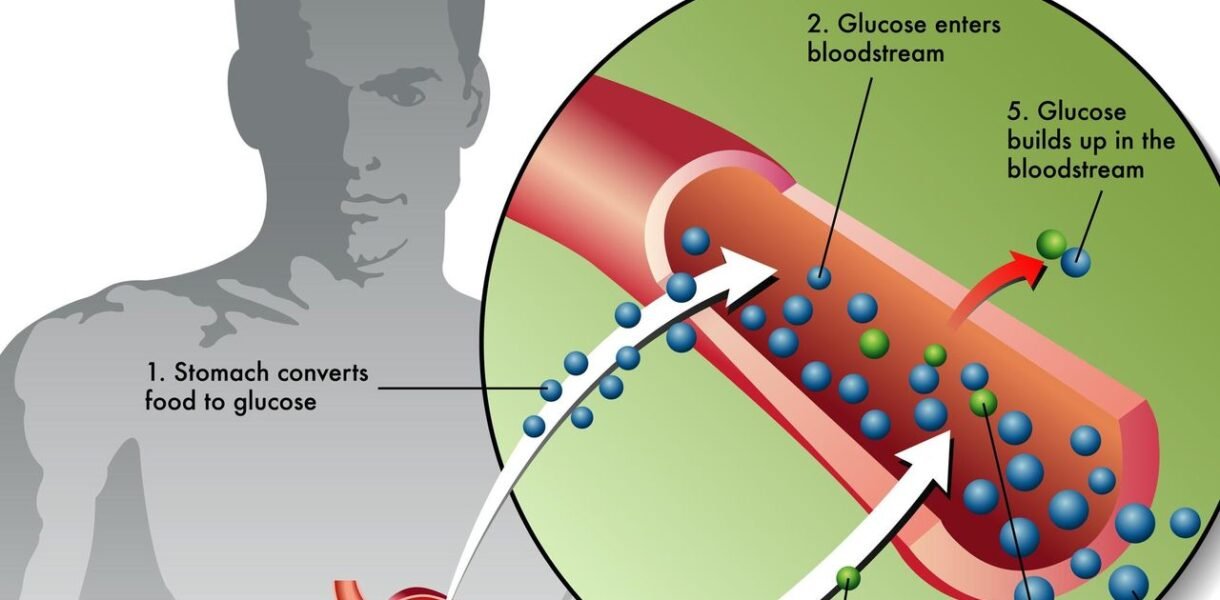Table of Contents
Type 1 Diabetes is a metabolic disorder that affects the body’s ability to produce insulin, a hormone that regulates blood sugar levels. Insulin plays a crucial role in the body’s metabolism, helping to regulate glucose levels and maintain energy levels. However, Type 1 Diabetes can lead to a variety of metabolic challenges, including high blood sugar levels, fatigue, and weight gain.
Potassium, a mineral that plays a crucial role in blood pressure regulation, is also a vital component of the body’s insulin system. In Type 1 Diabetes, the body’s ability to produce potassium can be compromised, leading to insulin resistance and other complications.
In this article, we will delve into the intricate relationship between Type 1 Diabetes, Insulin, and Potassium, exploring their roles in the body’s metabolism and how they can be managed effectively. We will also discuss the various treatments and lifestyle modifications that can help manage Type 1 Diabetes effectively.
Potassium and insulin relationship in type 1 diabetes

In this topic, we’re gonna talk about a special , situation with diabetes type 1 .And potassium .
There’s a kind of a rare situation in which your potassium levels in your blood go too high with diabetes type 1 .
I wanna explain how that works . Insulin controls potassium in the cell .
So if you have more insulin , there’ll be more potassium that goes in the cell .
Now , if you have insulin resistance , it’s not gonna go in the cell because it’s blocked .
High blood potassium levels caused by lack of insulin in type 1 diabetes
But normally , insulin drives potassium in the cell where it should be stored .

98% of all your potassium in your body is inside the cell , not outside the cell or even in your blood .
You only have 2% in your blood .So in diabetes type 1 , where you don’t 2% in your blood .
So in diabetes type 1 , where you don’t have enough insulin , k , because you have to inject yourself , that means that you can’t drive the potassium in the cell anymore .
So inside the cell , you’re gonna have very low amounts of a potassium test . And it checks all the minerals
But I think that’s very important because if you go to the doctor and you get your blood tested , and it’s high , that doesn’t necessarily mean , it’s high in the cell .
It means it’s high in the blood .
Why ?
Because you don’t have enough insulin to drive it in the cell .
So we have this situation where the cell is starving of potassium , but it’s all just loaded up in the blood .
It’s called hyper too much calemia or potassium .
It’s rare .
Only 1% of the , people in the hospital have it .
More commonly , it’s hypo calemia , low potassium .
But it’s very rare , and it but it can happen , especially if you’re taking massive quantities of potassium in your type 1 , and your your body is just not working .
It’s not able to drive it in the cell .
Symptoms of high blood potassiumin type 1 diabetes

I mean , the symptoms are
- palpitations
- muscle pain
- muscle weakness
- numbness .
Here is a table summarizing the info from the article
| Topic | Summary |
|---|---|
| Potassium and insulin relationship in type 1 diabetes | Insulin controls potassium in the cell. If there is insulin resistance, potassium cannot enter the cell. In type 1 diabetes, where there is a lack of insulin, potassium cannot be driven into the cell, resulting in high blood potassium levels. |
| High blood potassium levels caused by lack of insulin | In type 1 diabetes, due to insufficient insulin, potassium cannot be driven into the cell. As a result, there is a backup of potassium in the blood, leading to hyperkalemia. |
| Symptoms of high blood potassium in type 1 diabetes | Symptoms of high blood potassium levels include palpitations, muscle pain, numbness, and muscle weakness. |
| Accurately assessing potassium status in type 1 diabetes | It is important to get both a blood potassium level test and an intracellular potassium test to accurately assess potassium status in type 1 diabetes. The intracellular test measures the amount of potassium and other minerals inside the cell, providing more comprehensive data. |
| How does type 1 diabetes affect potassium levels? | In type 1 diabetes, insulin deficiency can cause potassium to shift out of cells and into the bloodstream, leading to hyperkalemia. Additionally, diabetic ketoacidosis (DKA), a complication of type 1 diabetes, can result in potassium loss through the kidneys, leading to hypokalemia. Monitoring and managing potassium levels is crucial for individuals with type 1 diabetes. |
| Why does type 1 diabetes cause hyperkalemia? | Type 1 diabetes causes hyperkalemia due to insulin deficiency. Insulin helps drive potassium into cells, but without enough insulin, potassium remains in the bloodstream, resulting in elevated serum potassium levels. This is especially common in diabetic ketoacidosis, where compensatory mechanisms further contribute to hyperkalemia. |
| Can too much insulin cause low potassium? | Excessively high insulin levels can contribute to low potassium (hypokalemia). Insulin promotes the movement of potassium from the bloodstream into cells, depleting circulating potassium levels. This is often seen in situations of insulin overdose, such as in the management of diabetic ketoacidosis or with inadvertent insulin administration. Careful monitoring and adjustment of insulin dosing is essential to prevent insulin-mediated hypokalemia. |
| Why does insulin deficiency cause hyperkalemia? | Insulin deficiency, seen in type 1 diabetes or uncontrolled type 2 diabetes, leads to hyperkalemia. Insulin helps drive potassium into cells, but without enough insulin, potassium remains in the bloodstream, resulting in elevated serum potassium levels. Insulin deficiency also impairs the kidney’s ability to excrete excess potassium, further contributing to hyperkalemia. |
| Potassium and blood sugar relationship | Potassium plays a role in blood sugar regulation. In type 1 diabetes, where insulin production is compromised, potassium levels can be affected. |
| Potassium and diabetes type 2 | While the article primarily focuses on type 1 diabetes, it briefly mentions that insulin deficiency in type 2 diabetes can also lead to hyperkalemia. |
| High potassium and diabetes | The article mentions that high potassium levels can occur in type 1 diabetes due to insulin deficiency, leading to hyperkalemia. |
| Insulin and potassium shift | Insulin helps drive potassium into cells. In type 1 diabetes, where there is insulin deficiency, potassium can shift out of cells and into the bloodstream, resulting in high blood potassium levels. |
| Type 1 diabetes and low potassium | In type 1 diabetes, insulin deficiency can lead to low potassium levels (hypokalemia) in certain situations, such as diabetic ketoacidosis. |
| Low potassium and high blood sugar | The article does not specifically mention the relationship between low potassium and high blood sugar in type 1 diabetes. |
| Low potassium and diabetes | The article mentions that low potassium levels can occur in type 1 diabetes in certain situations, such as diabetic ketoacidosis. |
| Potassium and insulin relationship in DKA | The article does not specifically discuss the relationship between potassium and insulin in the context of diabetic ketoacidosis (DKA). However, it mentions that DKA can cause potassium loss through the kidneys, leading to hypokalemia. |
Accurately assessing potassium status with intracellular testing in type 1 diabetes

I highly , it’s highly unlikely that you’re gonna get this condition from consuming vegetables .
Even if you had 7 to 10 cups of vegetables a day .
It’s usually if you’re doing massive amounts of like 5000 , 10000 milligrams of potassium .
So I just wanna bring your awareness up that if you’re a diabetic type 1 , potentially , your potassium could rise and you could have a problem , especially if you’re trying to increase it .
And then you should just know that that’s the function of insulin is to drive potassium in the cell .
But because you don’t have enough , it’s not going in the cell , creating a situation .
So , again , I think the most important thing to do is if you have any of these symptoms and if you’re concerned about it , get a blood test .
See if it is high .It might not be .
But definitely also get an intracellular test to measure how much potassium and other minerals are inside the cell because that’s that’ll give you more data .
key Points:
- Dr. Berg talks about diabetes type 1. Insulin controls potassium in the cell. If you have less insulin as in diabetes type 1, then you can get a backup of potassium in the blood, creating too much and not enough inside the cell. It’s a rare situation but you should know about it if you are a diabetic type 1.
- The symptoms of low blood potassium and high blood potassium are similar. But also realize that what’s happening in the blood does not tell you what’s happening INSIDE the cell. If you are a type 1 diabetic, it may be beneficial to get both tests – a blood potassium level test and an intracellular potassium test.
SYMPTOMS OF HIGH BLOOD POTASSIUM (Hyperkalemia)
-palpitations
-muscle pain
-numbness
-muscle weakness
SYMPTOMS OF LOW POTASSIUM IN THE BLOOD (hypokalemia):
-palpitations
-fatigue
-constipation
-tingling and numbness
-muscle weakness
DATA:
https://www.ncbi.nlm.nih.gov/pmc/articles/PMC9036284
FAQ:
How does type 1 diabetes affect potassium levels?
- In type 1 diabetes, potassium levels can be affected in different ways.
- Insulin deficiency can cause potassium to shift out of cells and into the bloodstream, leading to hyperkalemia (high potassium).
- Diabetic ketoacidosis (DKA), a serious complication of type 1 diabetes, can also cause potassium to be lost through the kidneys, resulting in hypokalemia (low potassium).
- Monitoring and managing potassium levels is crucial for individuals with type 1 diabetes.
Why does type 1 diabetes cause hyperkalemia?
- In type 1 diabetes, insulin deficiency can lead to hyperkalemia (high potassium levels).
- Insulin normally helps drive potassium into cells, but without sufficient insulin, potassium remains in the bloodstream, leading to elevated serum potassium levels.
- This is particularly common in the setting of diabetic ketoacidosis, where the body’s compensatory mechanisms further contribute to hyperkalemia.
Can too much insulin cause low potassium?
- Yes, excessively high insulin levels can contribute to low potassium (hypokalemia).
- Insulin promotes the movement of potassium from the bloodstream into cells, which can deplete circulating potassium levels.
- This is most often seen in situations of insulin overdose, such as in the management of diabetic ketoacidosis or with inadvertent insulin administration.
- Careful monitoring and adjustment of insulin dosing is essential to prevent insulin-mediated hypokalemia.
Why does insulin deficiency cause hyperkalemia?
- Insulin deficiency, as seen in type 1 diabetes or uncontrolled type 2 diabetes, can lead to hyperkalemia (high potassium levels).
- Insulin normally helps drive potassium into cells, but without sufficient insulin, potassium remains in the bloodstream, resulting in elevated serum potassium levels.
- Insulin deficiency also impairs the kidney’s ability to excrete excess potassium, further contributing to hyperkalemia in diabetic individuals.
Potassium and blood sugar relationship
- Potassium and blood sugar levels are closely interrelated.
- High blood sugar (hyperglycemia) can cause potassium to shift out of cells and into the bloodstream, leading to hyperkalemia.
- Conversely, low blood sugar (hypoglycemia) can trigger the movement of potassium back into cells, potentially resulting in hypokalemia.
- Maintaining optimal blood sugar control is important for regulating potassium levels in individuals with diabetes.
Potassium and diabetes type 2
- In type 2 diabetes, potassium imbalances can occur due to various factors.
- Insulin resistance, a hallmark of type 2 diabetes, can impair the body’s ability to regulate potassium levels effectively.
- Medications used to manage type 2 diabetes, such as certain diuretics, can also affect potassium homeostasis.
- Monitoring and addressing potassium levels is essential for optimizing diabetes management and preventing associated complications.
High potassium and diabetes
- Hyperkalemia (high potassium levels) can be a concern in individuals with diabetes, particularly those with type 1 diabetes or those experiencing diabetic ketoacidosis.
- Factors that can contribute to hyperkalemia in diabetes include insulin deficiency, impaired kidney function, and the use of certain medications.
- Prompt recognition and management of high potassium levels are crucial to prevent serious cardiac complications.
Insulin and potassium shift
- Insulin plays a crucial role in regulating potassium balance in the body.
- Insulin promotes the movement of potassium from the bloodstream into cells, helping to maintain normal potassium levels.
- Conversely, insulin deficiency or resistance can lead to the opposite effect, causing potassium to shift out of cells and into the bloodstream, potentially resulting in hyperkalemia.
Type 1 diabetes and low potassium
- In some cases, individuals with type 1 diabetes may experience low potassium (hypokalemia), particularly in the setting of diabetic ketoacidosis (DKA).
- During DKA, the body loses potassium through increased urination and vomiting, leading to depletion of potassium stores.
- Monitoring and replacing potassium levels is crucial to prevent complications associated with hypokalemia in type 1 diabetes.
Low potassium and high blood sugar
- Low potassium (hypokalemia) can be associated with high blood sugar (hyperglycemia) in individuals with diabetes.
- Hyperglycemia can cause the kidneys to lose potassium, leading to a depletion of potassium levels.
- Maintaining tight glycemic control and addressing any underlying factors contributing to low potassium can help prevent the adverse effects of this electrolyte imbalance.
Low potassium and diabetes
- Both type 1 and type 2 diabetes can increase the risk of low potassium (hypokalemia).
- Factors that can contribute to low potassium in diabetes include increased urinary potassium losses, vomiting, diarrhea, and the use of certain medications.
- Monitoring and addressing low potassium levels is essential to prevent complications, such as muscle weakness, cardiac arrhythmias, and impaired glucose control.
Potassium and insulin relationship in DKA
- In diabetic ketoacidosis (DKA), the relationship between potassium and insulin is particularly complex.
- Insulin deficiency, a hallmark of DKA, can lead to the movement of potassium out of cells and into the bloodstream, resulting in hyperkalemia.
- However, the accompanying dehydration and electrolyte imbalances in DKA can also lead to the loss of potassium through the kidneys, contributing to hypokalemia.
- Careful management of both insulin and potassium levels is crucial in the treatment of DKA to prevent complications.




